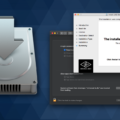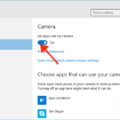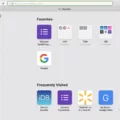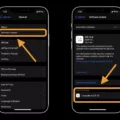Are you getting a Mac update error 102? If so, you’re not alone. This is a relatively common problem with Mac computers that occurs when trying to update a certain app in the Apple Store or when installing unauthored software.
Fortunately, tere are several things you can do to resolve this issue and get your Mac back up and running. In this blog post, we’ll walk you through what causes Mac update error 102, as well as some easy solutions to help resolve the issue.
What Causes Mac Update Error 102?
Mac update error 102 usualy occurs due to corrupted files, firewall issues, accumulation of junk files, lack of free disk space, etc. It can also be caused by incompatible software or outdated system files.
How to Resolve Mac Update Error 102:
1. Remove the App That Caused the Error: The first thing you should do is remove any app that may have caused the error in the first place. To do this, simply open Finder and head to Applications > Utilities > Activity Monitor and locate the problematic application in the list. Select it and click “Quit Process” followed by “Force Quit” if necessary. Then delete the application from your Applications folder by dragging it into the Trash bin or using Command + Delete on your keyboard.
2. Delete Corrupted Preference Files: Corrupted preference files can also case Mac update error 102, so it’s important to delete them from your system if possible. To do this, open Finder and go to Home > Library > Preferences and locate any corrupted preference files related to the application causing the issue. Once found, drag them into your Trash bin or press Command + Delete on your keyboard to delete them permanently from your computer.
3. Remove Problematic Apps from Your Mac’s Start-up: If certain apps are causing problems with startup items or conflicting with other applications when launching them, they may need to be removed from your startup list entirely in order for things to run smoothly again on your system. To do this head over to System Preferences > Users & Groups > Login Items tab and uncheck any apps listed here that you don’t want running at startup – such as those causing errors when launching them previously – then restart your computer for good measure afterwards too!
4. Remove Junk/Cache Files: Over time, junk/cache files can accumulate on your hard drive which can cause various issues including Mac update error 102. To clean these up head over to Finder > Go (or press Command + Shift + G) then type ~/Library/Caches in order access all cached data stored in this folder – simply select anything relaed to an app causing problems with updates then drag+drop it into your Trash bin or use Command+Delete on keyboard for permanent deletion! Additionally, you can use third party cleaning utilities like CleanMyMac X which are specifically designed for removing junk data from OS X systems quickly & easily!
5 . Fix Disk Permissions Via Disk Utility: Disk permission issues can also cause errors like this one so it’s important that you check & repair these using Disk Utility if needed by opening Finder > Applications > Utilities > Disk Utility then selecting First Aid tab at top menu bar & clicking Verify Disk Permissions button (repairing may require authentication too). Once complete try updating again & see if problem persists afterwards!
6 . Reinstall macOS: As a last resort if none of these steps work then reinstalling macOS may be necessary – just make sure all important data is backed up before doing so as reinstalling will wipe out everything else stored on hard drive (including applications). You can reinstall OS X via Recovery Mode by restarting computer whie pressing Option key after hearing chime sound at startup – select ‘Reinstall OS X’ option here & follow instructions provided afterwards until complete!
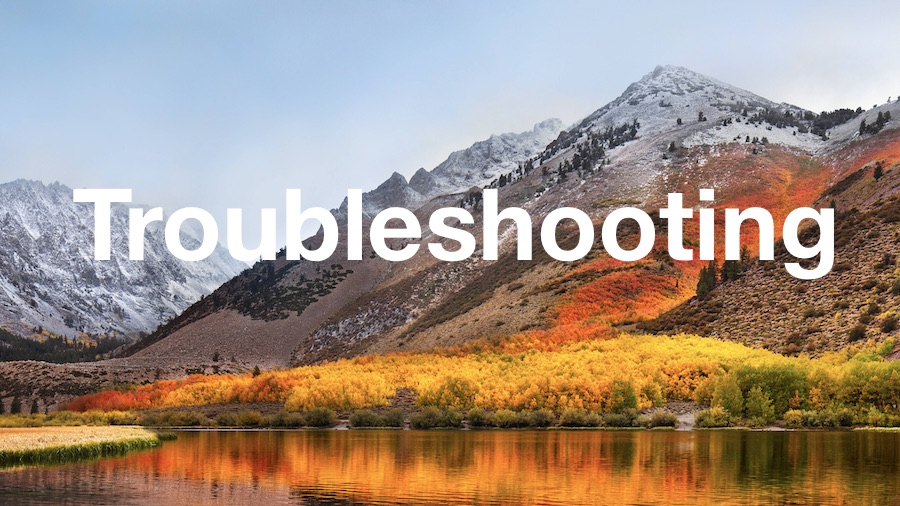
Troubleshooting Mac Error 102
Error 102 is a common error on Macs that can be caused by a variety of issues. Fortunately, tere are some steps you can take to try and fix the issue.
First, try removing the application that caused the error in the fist place. To do this, open Finder, click Applications, then locate and drag the app to the Trash. You may need to enter an administrator password if prompted.
Next, delete any corrupted preference files that may have been causing the problem. To do this, open Finder and enter ~/Library/Preferences into the search bar. Look for any .plist files reated to the app that was causing Error 102 and delete them from your Mac.
You should also take a look at what apps are launching automatically when you start your Mac – thse could be causing Error 102 as well. To stop these apps from launching at start-up, go to System Preferences > Users & Groups > Login Items tab and remove any apps that you suspect could be causing problems.
It’s also worth deleting any junk or cache files from your Mac that may have been slowing it down or causing issues with other applications. You can use a third-party app like CleanMyMac X to get rid of thee files quickly and easily.
If none of these steps resolve Error 102 on your Mac, you may need to run Disk Utility to check your disk permissions and repair any errors it finds. Open Spotlight search, type in “Disk Utility” and hit Enter – then select your hard drive from within Disk Utility and click Repair Disk Permissions button at bottom rigt corner of window when it appears.
Finally, if all else fails you may need to reinstall macOS on your computer in order to completely fix Error 102 on your Mac – but this should always be considered a last resort option as it will erase all data on your computer!

Error 102 on Mac: What Does It Mean?
Error 102 on Mac indicats that the computer has encountered an issue while trying to update a specific app from the Apple Store or install unauthored software. It can be caused by a variety of factors, such as corrupted files, firewall problems, accumulation of junk files, lack of free disk space, etc. To fix this error, it is recommended to try cleaning up junk files and clearing the cache in order to free up disk space. Additionally, make sure that your firewall and antivirus settings are not blocking the download/installation process. If all else fails, restarting your computer might help solve the issue.
Fixing a Mac Update Error
The first step to fixing a Mac update error is to identify the specific issue. Common problems include not having eough disk space, having a corrupted or outdated installer, or issues connecting to Apple’s servers. Once you’ve identified the issue, you can take the necessary steps to fix it.
If you don’t have enough disk space, try removing unnecessary files and programs from your Mac. If you’re using an outdated installer, try downloading and installing the latest version of macOS from Apple’s website. If there are connection issues with Apple’s servers, try restarting your Mac or running a network diagnostics tool to resolve any network issues.
If you’re sill experiencing problems after trying these steps, you may need to contact Apple Support for help resolving the issue.
Troubleshooting Mac Update Failures
There can be several reasons why macOS won’t update. The most common cause is a poor network connection, which prevents the Mac from downloading the update files. If you’re connected to Wi-Fi, make sure it’s stable and not overloaded. Additionally, your Mac migt need more free disk space in order to install the update. Check the available storage on your Mac by going to About This Mac in the Apple menu and clicking Storage.
Other potential caues include software conflicts, corrupted system files, out-of-date boot ROM version, Apple server issues, or problems with third-party security software. It’s also possible that your current version of macOS is no longer supported by Apple. You can check for updates using the Software Update feature in System Preferences. If all else fails, contact Apple Support for further assistance.
Troubleshooting Issues with Mac Software Updates
The most common reason your Mac isn’t updating software is because it doesn’t have enough free storage space. Updates require a certain amount of storage space to download and install, usually 15–20GB. If you don’t have enough free storage space on your Mac, the update won’t be able to complete. To make sure you can update your Mac software, check your Storage tab in the About This Mac window and make sure you have at least 15–20GB of free storage before attempting to install an update.
Troubleshooting Big Sur Update Issues on Mac
It’s possibe that your Mac isn’t compatible with the macOS Big Sur update. To check if your Mac is compatible, go to the Apple website and enter your model number under “About this Mac” in the Apple menu. If your Mac is not listed as one of the officially supported models, you should not proceed with the update.
It could also be that your current version of macOS is too old to support the Big Sur update. In this case, you’ll need to download an intermediate version of macOS (e.g., Mojave or Catalina) bfore proceeding with Big Sur.
Finally, it’s possible that there was a problem during the download process. If so, try searching for any partially-downloaded Big Sur files and delete them before attempting to download the update again.
Bypassing Certificate Errors on a Mac
If you’re seeing a certificate error on your Mac, there are a few steps you can take to try and fix the problem.
First, clear the browser cache. This can often be done from witin the browser itself by going to the browser settings and clicking ‘clear history’ or similar. If that doesn’t work, try quitting and reopening the browser.
Second, make sure that the date & time settings on your Mac are correct. To do this, go to System Preferences > Date & Time and check that both date & time are correct.
Finally, if you’re still getting certificate errors after doing these steps, you may need to modify the trust settings for a particular certificate. To do this, open Keychain Access (you can find it in Applications > Utilities). Here you’ll see a list of all your system certificates; search for the one related to your issue and double-click it to open up its options window. In there you sould be able to change the trust settings for that particular certificate – set it to ‘Always Trust’ and save changes.
Hopefully one of these steps will get rid of any certificate errors on your Mac!
Fixing an SMTP Server on a Mac
In order to fix your SMTP server on Mac, you’ll need to open the Mail app on your Mac and select the ‘Mail’ menu. Then, click ‘Settings’, followed by ‘Accounts’, then ‘Server Settings’ and finally select the ‘outgoing Account’ pop-up menu. At this point, choose ‘Edit SMTP Server List’. This will show you all of the servers available to you and which accounts are uing them. From here, you can add or remove a server as needed. Once any changes have been made, be sure to click ‘OK’ to save them.
Updating Mac Manually
To manually update your Mac, open the App Store app. In the top navigation bar, click on the Store menu and select Check for Updates. This will search for available software updates on your Mac. When new updates are available, you can install them by clicking Update All or Install next to individual updates. If you need to update specific apps, go to the Updates tab in the App Store and click Update next to those apps. You can also select any app and click the Update button uner its name to view available updates.
Updating an Old Mac That Won’t Update
If your older Mac doesn’t include Software Update or the App Store, you can still update your Mac. Depending on what version of macOS you are running, thre may be other ways to update your system.
For example, if you are running an older version of macOS (10.6 or earlier), you can download the latest updates directly from Apple’s website at http://www.apple.com/support/downloads/. Once you have downloaded the update package, open it and follow the instructions to install the update.
If you are running a newer version of macOS (10.7 or later), then you can use the built-in Software Update feature in System Preferences to check for and install updates for your Mac. To do this, open System Preferences and select Software Update from the View menu. If there are any available updates, they will be listed and you can choose which ones to install.
If neither of these options is available, then it might be worth considering upgrading your system to a newer version of macOS that supports Software Update and the App Store. Doing so may provide access to newer features as well as improved security and stability for your Mac.
Unable to Update to macOS Monterey on Mac
There may be a few reasons why your Mac isn’t allowing you to update to macOS Monterey. Firstly, it may be that your Mac is using an older version of macOS and is not compatible with the new version. Secondly, your Mac may not have enough free space for the download and installation of macOS Monterey. It’s reported that it neds around 20GB of space. Lastly, your Wi-Fi connection may be weak or unreliable which can cause issues with downloading updates. We recommend checking all three of these factors before attempting to update again.
Conclusion
In conclusion, Mac update error 102 is a relatively common issue with Mac computers that occurs when trying to update a certain apps in the Apple Store or when installing unauthored software. It can be caused by corrupted files, firewall issues, accumulation of junk files, lack of free disk space, etc. If you encounter this error, the best way to resolve it is to remove the app that caused the error, delete corrupted preference files, remove problematic apps from your Mac’s start-up, remove junk/cache files, fix disk permissions via Disk Utility and finally reinstall macOS.

